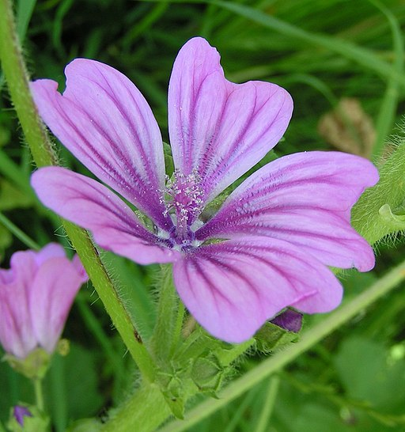Malva sylvestris

Also called high mallow and tall mallow.
The story…
Common mallow grows in Europe, North America, Middle East and Siberia. It can be found in meadows, non-cultivated lands, roadsides and gardens. According to some historians, its name, from the Greek malasso, to soften, derives from its reputation to pacify passions and minds.
Uses
Mucous membrane inflammations
The mucilage contained in the plant soften and refreshes the mucous membrane of an inflamed throat (especially after having talked a lot, or because of an allergy) and dry cough. It appeases mouth irritations (aphtha, gum irritation) and digestive mucous membrane inflammations (esophagus, stomach, intestine).
Nutritional value
Mallow is vitamin (A, B1, B2 and C), mineral salts, protein, iron and calcium-rich. You can for example eat the flowers and young leaves as a salad, soup, stuffing or stew.
Preparation
Infusion: 15g/L of dry flowers; 20 to 25g/L of dry leaves. Can be combined with thyme or coneflowers for cough and sore throat.
Precautions
In case of persistent symptoms or if you have any doubts, consult a doctor.
